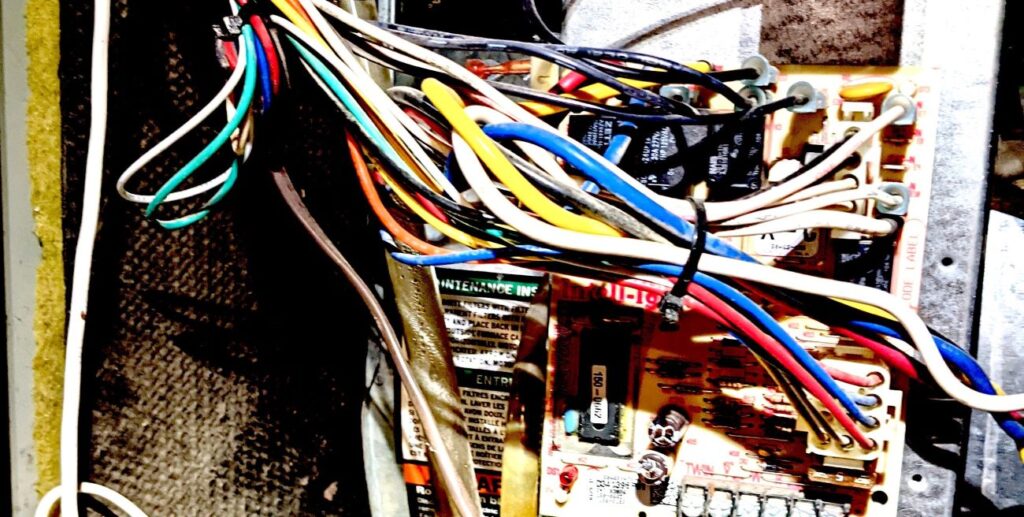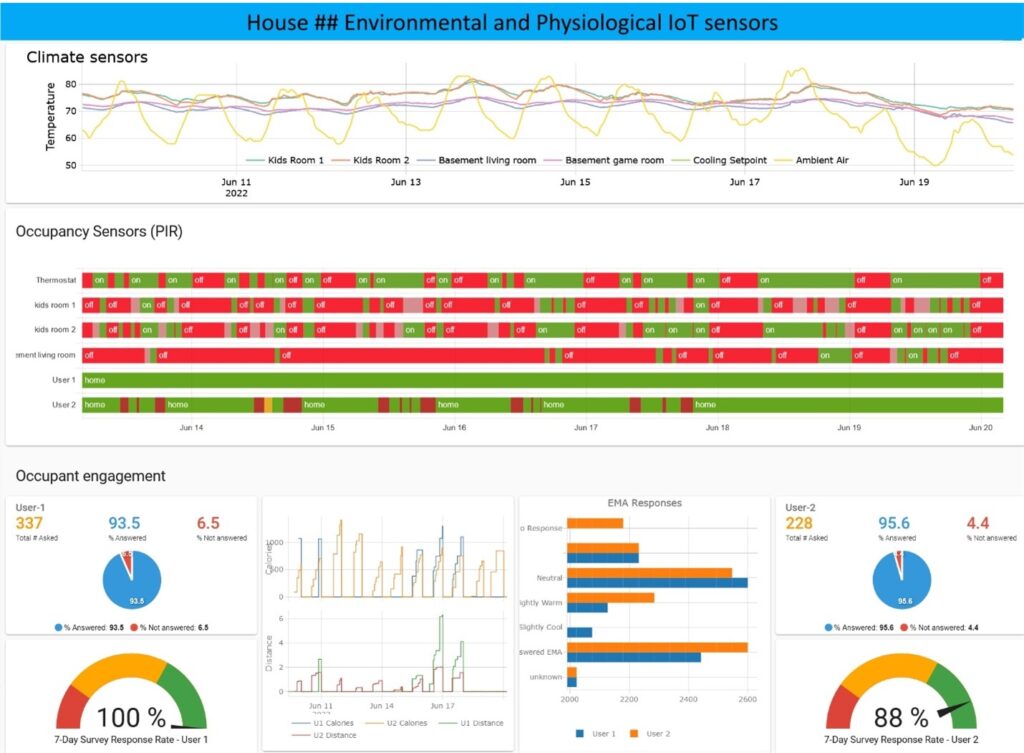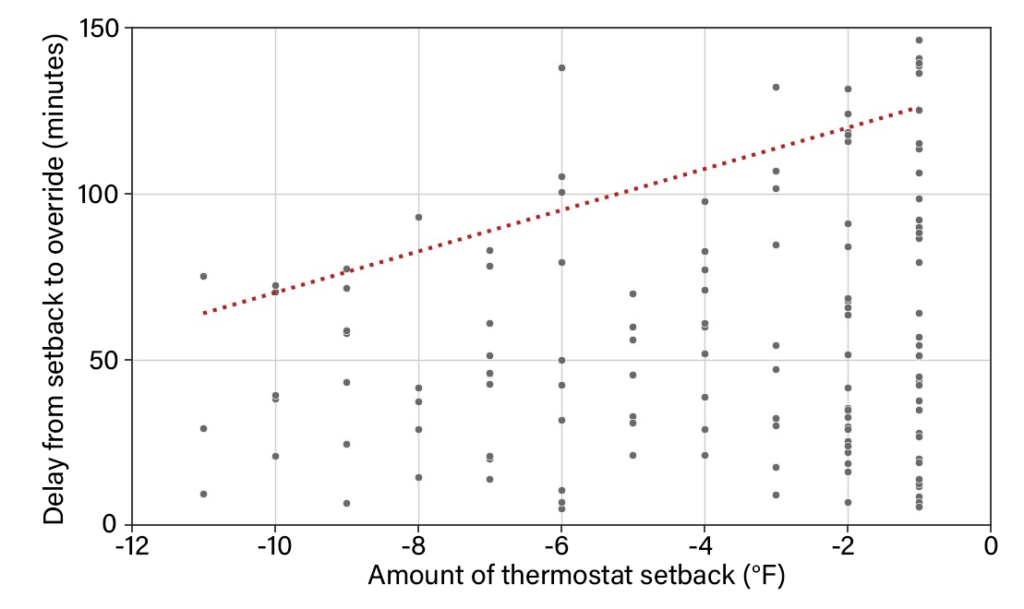
Imagine if we could control the sun and wind like we do a bonfire: Every time the blaze dies down you throw on a log, sit back and enjoy the extra warmth. But we are not the gods of those forces, whose power is a crucial part of a clean energy transition. If it’s sunny or windy, the electric grid is flooded with kilowatts. If it’s gray out or still, the grid is parched.
For now, we can rev up fossil-fuel burning power plants whenever we need more energy, kind of like a bonfire. But we’re going to have to be more creative if we want most of our energy to come from massive solar fields or turbines in the sea. One way to do that is by aligning our energy usage with the peak hours of clean energy production — for solar, between late morning and early afternoon. For wind, nighttime hours.
“It’s not about how much energy you use. It’s about using energy when it’s clean,” says Michael Kane, assistant professor of civil and environmental engineering at Northeastern University. And there’s a few strategies for doing that.
“You can just put a battery next to a wind turbine…but that’s really expensive,” says Kane — not to mention logistically challenging and heavy metal-intensive. Or, you can make residents, their homes and utilities smarter by aligning energy use with the sun and wind’s natural rhythms. As Kane says about renewables: “You need to change demand as well as supply.”
Kane is the lead researcher on Whole Energy Homes, which is funded by the National Renewable Energy Laboratory and is the first study to explore people’s reactions to utilities controlling their thermostats in a residential setting. The goal is to facilitate cooperation between both parties so that utilities can make sure homes are consuming energy at the “clean”-est times of day. To make that successful, it’s critical to understand people’s tolerance to temperature adjustments.
Through energy audits, interviews, smart thermostats and motion-sensors, the team gets a snapshot of people’s orientation toward the incredible energy suck of heating and cooling space — over half of a home’s energy use, according to the Environmental Protection Agency.
“It’s not just a technical problem,” says Kane. “It’s a psychological one.”

Buildings don’t use energy — people do.
Kane’s background is in civil and environmental engineering, so this study is taking him into unusual territory. He needs to understand family psychology, behavioral economics and when it comes down to it, simple human nature.
“We think that the building is using the energy. But it’s really like the building is there for a reason — and that’s for the people.”
Kane offers an example of a way to use energy differently to help a grid powered by the sun: Say it’s 90 degrees and you and your neighbors are coming home from work, all turning on the AC at the same time to cool a house that’s been baking all day. While you were out, the sun was shining on your rooftop solar panels or in the fields beyond, and it sent so much energy to the grid that it couldn’t all be used. What if your AC had kicked on then and made the house extra cold, enough that by the time you got home it was at the Goldilocks temperature? Sure, you might have to use extra energy to compensate for the fact that your house can’t store cold air indefinitely. But that’s okay, because earlier in the day the energy was clean — it came from a solar source, not the coal-fired plant one town over.
Pre-cooling a home and other strategies (like delayed starts for dishwashers, dynamic EV battery charging, and more) can help a lot. But, they may require some flexibility. Every household has a different tolerance for waiting for an AC to kick back on when it’s hot.
To better understand people’s flexibility, the study looks at 20 homes across Denver and Boston (with plans to expand to other cities). In phase one, which was completed in the spring of 2023, the team conducted energy audits, installed sensors and thermostats and provided each household with an app to control the thermostat.
There were also hour-long qualitative interviews. This established a baseline understanding of people’s behavior and how they responded to typical pre-programmed thermostat settings or someone else in the house changing the temperature. In phase two, Kane’s team will remotely adjust the temperature in people’s homes and see how they respond. Will they notice? Will they override?

The second phase will be similar to what utilities have already tried, and mostly failed at, says Kane. The concept is called “demand response,” an approach developed in the 1990s to manage huge fluctuations in energy demand during heat waves and the like. Utilities would give people a monetary incentive for permission to flip the switch on their air conditioner to prevent blackouts. Some people would tolerate the hotter, stickier condition of their house for a period of time, and others would override the system and lose the credit.
“Demand response was like brute force,” says Kane, about its beginnings. And because of that, it hasn’t been very successful since.
Instead of simply guessing at it, Kane is trying to determine what an appropriate temperature adjustment is for a given household and how long before people feel discomfort and override (see Kane’s prior published work on personalizing demand response).
The following graph shows how much tolerance people in the study had for temperature changes made by their smart thermostat. The greater the temperature change, the more quickly someone in the household became uncomfortable and overrode it.

The main takeaway — people’s reactions are variable and very personal. While the study’s sample size is small, and therefore not intended for statistically significant trends, it’s clear that different preferences exist based on the demographics of the household, how the home is used, the building type, etc. That’s where the job of the engineer comes in, to create advanced modeling based on a given household’s (or street’s, or neighborhood’s) behaviors, so that utility interventions actually work.
Kane’s charge, in particular, is to use data like this to help the Department of Energy, policymakers and utilities figure out the most successful demand response program. The premise of the program will likely remain the same: It will offer residents some kind of financial incentive for letting the grid control their energy use, whether it be through thermostats that cause a slight amount of thermal discomfort or taking charge of when the dishwasher is run. But it will be much more nuanced and hopefully more harmonious between the people and the automated systems.
The good news, he says, is we have the technology to execute these things right now. Smart thermostats exist, and with them, utilities can adjust temperatures remotely. There are timed appliances and appliances controlled by phone, and because of that, they can be turned on and off when it makes sense. In theory, with enough friendly synchronization between homeowners and the grid, we could customize our energy demand enough to use the majority of our energy when it’s clean. Kane’s research gets us one step closer to that future.
Story from the Science Media Lab.
Last Updated on August 18, 2023
